OS&Y Valves: Essential Components in Fire Protection Systems
OS&Y valves, also known as Outside Screw and Yoke valves, are essential components in fire protection systems. These valves play a critical role in controlling the flow of water within sprinkler systems and other fire suppression equipment. Understanding OS&Y valves, their features, benefits, installation best practices, and maintenance requirements is crucial for anyone involved in fire safety. This article will provide a comprehensive overview of OS&Y valves, ensuring you have the knowledge needed for effective fire protection.
What Are OS&Y Valves?
OS&Y valves are a specific type of gate valve that engineers design primarily for fire protection applications. Their unique design features an external stem screw that allows for easier identification of the valve’s position—open or closed. The term “OS&Y” emphasizes this design, where the screw mechanism and yoke are located outside the valve body, providing clear visibility of operation.
Key Features of OS&Y Valves
- Visual Indicator: One of the most significant advantages of OS&Y valves is the external position indicator. This design allows firefighters and safety personnel to quickly assess whether the valve is open or closed, which is critical during emergencies.
- Durability: OS&Y valves are typically crafted from robust materials such as brass, cast iron, or stainless steel, providing exceptional durability and resistance to harsh environmental conditions. Their construction ensures reliable operation over time.
- Ease of Maintenance: Thanks to their external stem design, OS&Y valves facilitate easier access for inspection, maintenance, and repairs. This accessibility helps reduce potential downtime and enhances system reliability.
Importance of OS&Y Valves in Fire Protection Systems
OS&Y valves are vital for several reasons:
- Control of Water Flow: In fire suppression systems, these valves are responsible for controlling the flow of water. They can be swiftly operated in emergencies, allowing for rapid response to fires.
- Safety Assurance: The visual design of OS&Y valves enhances safety for personnel operating fire suppression systems.Indicating the valve position significantly reduces the risk of accidental discharge or errors.
- Compliance and Standards: Many fire safety codes, including those set forth by the National Fire Protection Association (NFPA), require the use of it in specific fire protection applications. Adhering to these standards is essential for ensuring safety and meeting regulatory requirements.
Best Practices for Installation
Proper installation of OS&Y valves is fundamental to their successful operation. Here are some best practices to consider:
- Location: Always install OS&Y valves in easily accessible areas to facilitate operation and maintenance. Ensure that the valve’s yoke and handwheel are positioned for convenient access.
- Sizing: Selecting the correct valve size is crucial for optimal flow control. Undersized or oversized valves can adversely impact the performance of the fire protection system.
- Orientation: Install the OS&Y valve according to the manufacturer’s guidelines regarding orientation. An improper installation can lead to operational difficulties and may compromise system effectiveness.
- Systematic Testing: After installation, conduct systematic testing to ensure the valve operates correctly and meets performance specifications. Regular testing should be implemented as part of a comprehensive maintenance program.
Maintenance Recommendations
Regular maintenance is key to ensuring the longevity and performance of OS&Y valves. Here are some recommended practices:
- Routine Visual Inspections: Conduct frequent inspections to verify the functional status of the valve. Look for signs of wear, corrosion, or leaks, and address any issues immediately.
- Lubrication: Maintain lubrication on the valve stem and other moving parts according to the manufacturer’s specifications. Proper lubrication prevents sticking and ensures smooth operation.
- Functional Testing: Regularly test the valve to confirm that it opens and closes properly.This is especially important if you have not activated the valve for an extended period
Compliance Standards
Adhering to applicable fire safety standards is imperative when installing and maintaining it. Consider these key standards:
- NFPA 13: This standard outlines the requirements for installing sprinkler systems, including guidance on the appropriate use of it.
- Local Fire Codes: Always comply with local regulations and codes, which may impose specific requirements based on geographic or industry considerations.
Enhancements in OS&Y Valve Technology
The evolution of OS&Y valve technology continues to impact the fire protection landscape. Innovations include:
- Smart Technology: Recent advancements in valve technology have introduced smart OS&Y valves equipped with sensors that monitor pressure and flow rates in real time, enhancing system management and early detection of issues.
- Corrosion Resistance: Innovations in material science have led to the development of it enhanced corrosion-resistant coatings, extending their lifespan it, especially in harsh environments.
Conclusion
OS&Y valves are indispensable components of effective fire protection systems. With their unique design, durability, and compliance with fire safety standards, they are vital in safeguarding lives and property from fire hazards. By understanding their features, installation best practices, maintenance recommendations, and the latest technological advancements, fire safety professionals can ensure that their systems operate efficiently and effectively, providing the highest level of protection.


